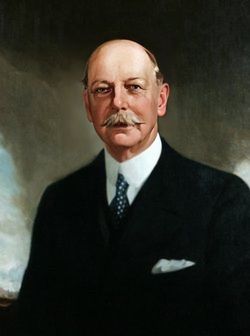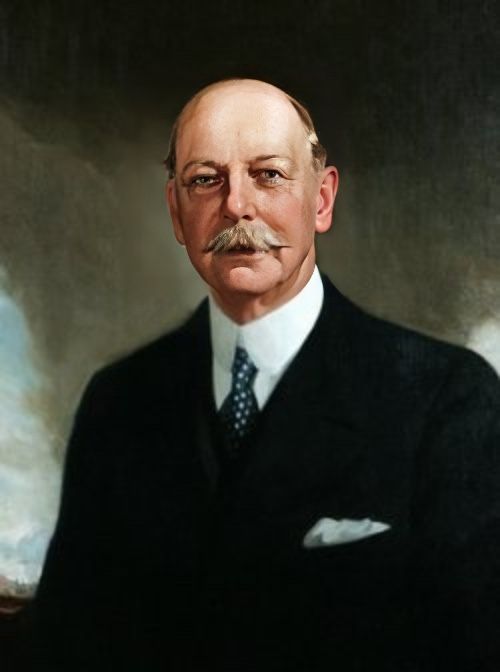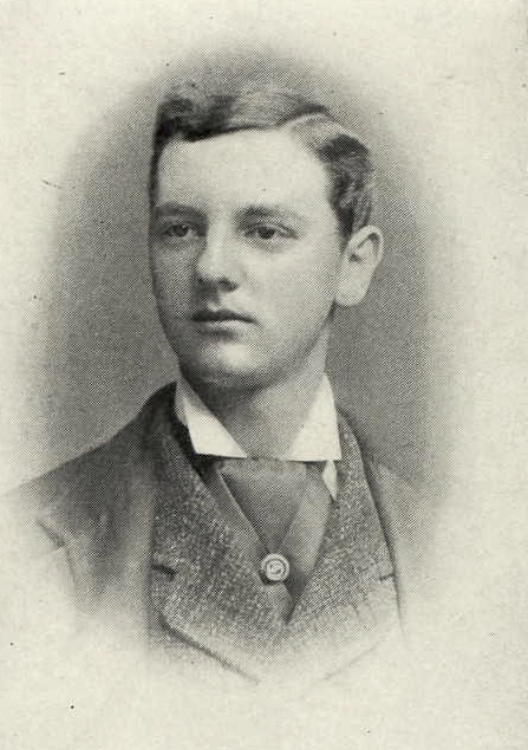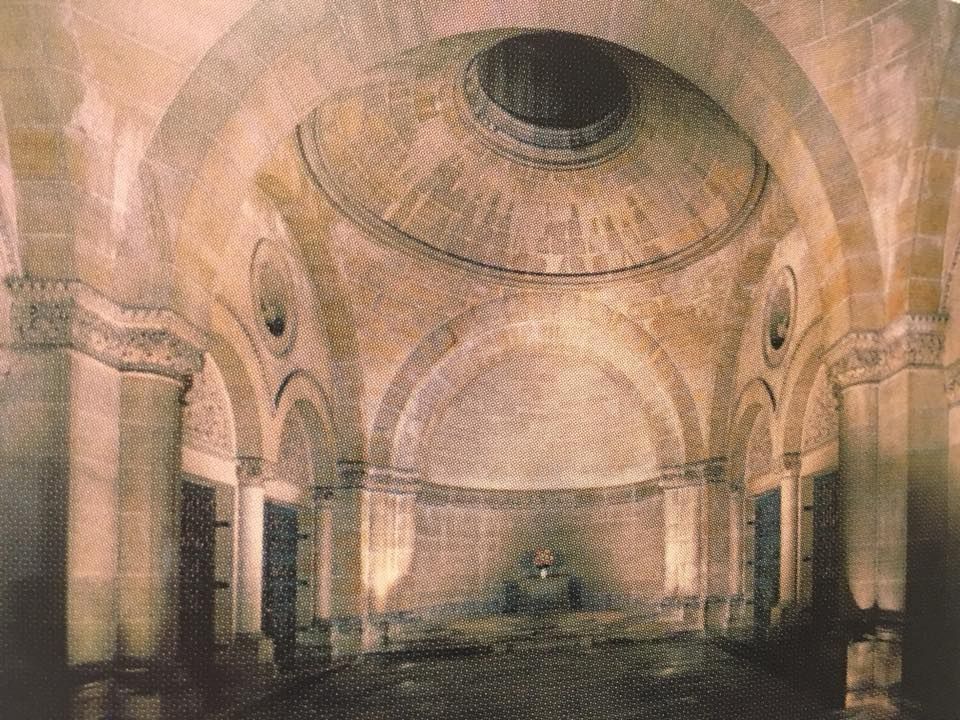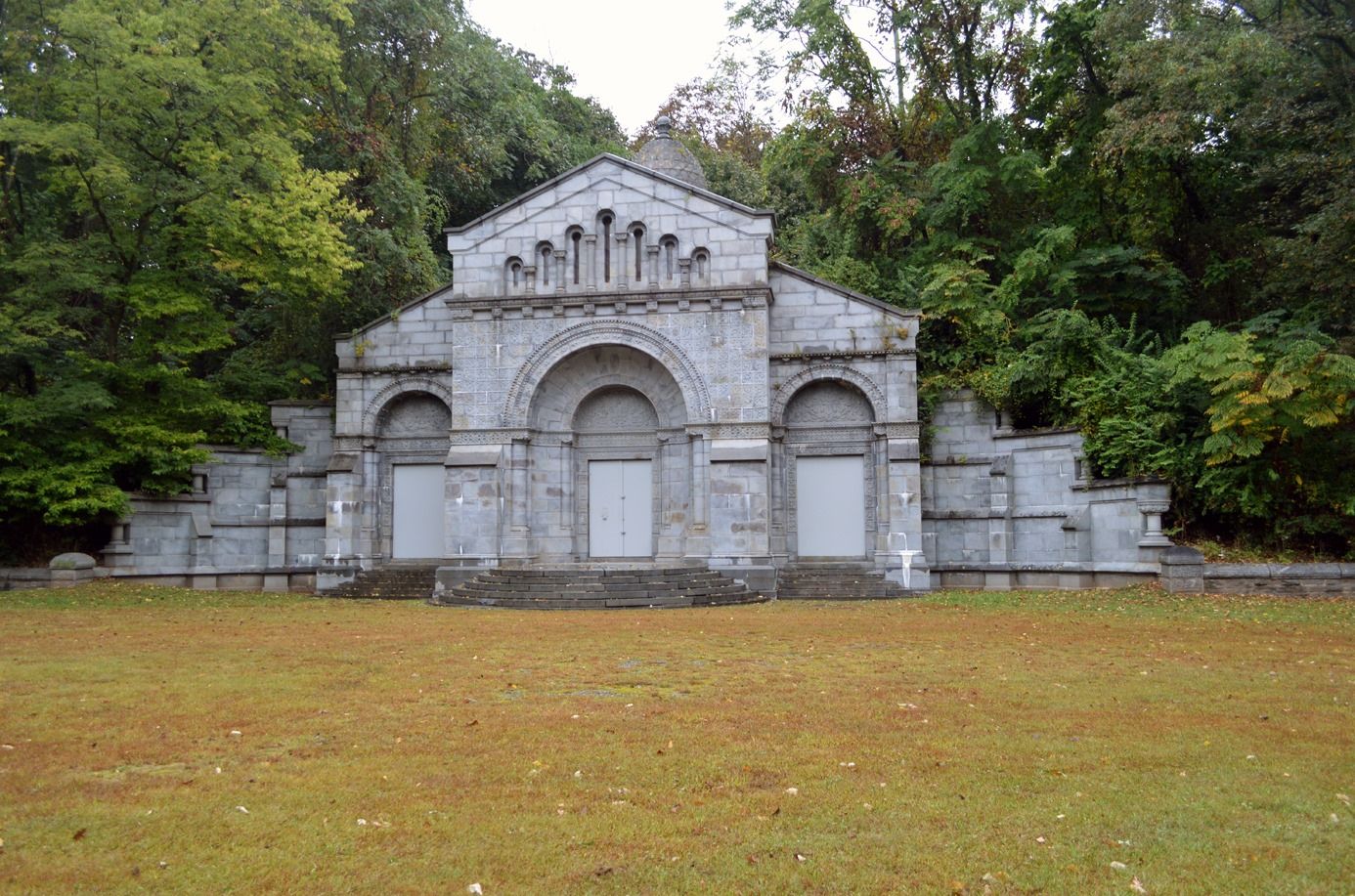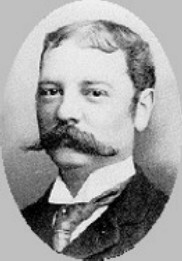Vanderbilt was born on February 2, 1856, in New Dorp, Staten Island. He was the third son of eight children born to William Henry Vanderbilt (1821–1885) and Maria Louisa (née Kissam) Vanderbilt (1821–1896). His siblings were Cornelius Vanderbilt II, who married Alice Claypoole Gwynne; Margaret Louisa Vanderbilt, who married Elliott Fitch Shepard; William Kissam Vanderbilt, who married Alva Erskine Smith and Anne Harriman Sands Rutherfurd; Emily Thorn Vanderbilt, who married William Douglas Sloane and Henry White; Florence Adele Vanderbilt, who married Hamilton McKown Twombly; Eliza Osgood Vanderbilt, who married William Seward Webb; and George Washington Vanderbilt II, who married Edith Stuyvesant Dresser.
Frederick was the grandson of Commodore Cornelius Vanderbilt, who first created the Vanderbilt family wealth. Upon his death in 1877, the Commodore left 95% of his $105 million estate to his son William Henry (Frederick's father) and four grandsons through him. This left his only other living son, Cornelius Jeremiah Vanderbilt, and 9 daughters (Phebe Jane, Ethelinda, Eliza, Emily Almira, Sophia Johnson, Maria Louisa, Frances Lavinia, Mary Alicia, and Catherine Juliette), comparatively little inheritance. William's eldest son, Cornelius Vanderbilt II, received $5 million in the will, while his three younger sons—William Kissam Vanderbilt, Frederick William Vanderbilt, and George Washington Vanderbilt II—received $2 million apiece.
In 1876, Frederick William Vanderbilt graduated from Yale University's Sheffield Scientific School, to which he later donated $500,000 (equivalent to $14,955,769 today) in 1902. In 1878, Frederick married Louise Holmes Torrance (née Anthony) (1854–1926), the daughter of Charles Lee Anthony and Catherine (née Holmes) Anthony. Louise's father was a successful dry-goods merchant in New York City. Louise had been previously married, in 1868, to Frederick's cousin Alfred Torrance, before their divorce in 1877.
After graduating from Yale, Frederick joined his father at the New York Central Railroad, like his brothers, working in one department after another to gain an understanding of the railroad business. His father, William Henry Vanderbilt, only lived another 8 years beyond his grandfather. Of William's 8 children, Cornelius II received $80 million, William Kissam, $60 million; and George Washington, $14 million. Frederick and his 4 sisters each received $10 million.
After working for many years at the railroad, Frederick devoted his time to travel and yachting. He was a director of 22 railroads, including the New York Central Railroad, the Pittsburgh and Lake Erie Railroad, and the Chicago and North Western Railroad.
Vanderbilt maintained residences in New York City (he lived for a while at 450 Fifth Avenue), Newport ("Rough Point"), Bar Harbor ("Sonogee"), Upper St. Regis Lake in the Adirondacks ("Pine Tree Point"), and a country palace in Hyde Park, New York ("Hyde Park") now preserved by the National Park Service as Vanderbilt Mansion National Historic Site. He built the nearby Howard Mansion and Carriage House for his nephew Thomas H. Howard in 1896. Vanderbilt was the owner of 10 East 40th Street in Manhattan, a prominent example of art deco architecture, until his death. He also owned the steam yachts Vedette, Conqueror, and Warrior.
Frederick's Hyde Park mansion was actually the smallest (54 rooms, 14 baths) and least extravagant of all the houses built by the 4 brothers. Cornelius II built the Breakers and William Kissam built Marble House, both in Newport, Rhode Island. The youngest brother, George Washington, built Biltmore, outside of Asheville, North Carolina. Frederick's "Hyde Park," a Beaux Arts mansion built from 1896-1898 of Indiana limestone, by famed architects McKim, Mead, and White, cost $660,000 to build and $1,500,000 to furnish. The 3 other brothers spent $7-12 million on their mansions. The family called Hyde Park "Uncle Freddie's Summer Cottage." By the 1920's, Frederick and Louise spent more time at Hyde Park. After his wife's death in 1926, Frederick lived at Hyde Park year round until his death in 1938. At the time of his death, he was worth more than his other 3 brothers combined; they had spent their money on their homes. Frederick was able to give more to charity. He gave $10 million during his life and $10 million in his will.
He commissioned a number of campus buildings at Yale University by architect Charles C. Haight that survive to this day, from campus dormitories comprising the present-day Silliman College, to Vanderbilt Hall, Phelps Hall; the Mason, Sloane, and Osborn laboratories; and his secret society, St. Anthony Hall.
Frederick Vanderbilt died in Hyde Park, New York, on June 29, 1938. He was entombed in the Vanderbilt Mausoleum, in the Vanderbilt Family Cemetery in New Dorp. His estate was valued at $79,845,478 (equivalent to $1,404,882,992.00 today) upon his death. He left $5,200,000 to the Sheffield Scientific School, $3,900,000 to Vanderbilt University, $1,300,000 to the Salvation Army, and $650,000 to the New York Association for Improving the Condition of the Poor. He was the last of the railroad barons in the United States and the last of the great estate holders in the Hudson Valley.
Frederick and Louise had no children. After his charitable donations, his niece, Mrs. Margaret Louise Van Alen (1876–1969), was the chief heir of his estate, receiving his 5th Avenue home, Hyde Park home, and 25% of the residue of the estate.
Additional information from a July 14, 2006, visit to Hyde Park by Angela, Member #48520699.
Vanderbilt was born on February 2, 1856, in New Dorp, Staten Island. He was the third son of eight children born to William Henry Vanderbilt (1821–1885) and Maria Louisa (née Kissam) Vanderbilt (1821–1896). His siblings were Cornelius Vanderbilt II, who married Alice Claypoole Gwynne; Margaret Louisa Vanderbilt, who married Elliott Fitch Shepard; William Kissam Vanderbilt, who married Alva Erskine Smith and Anne Harriman Sands Rutherfurd; Emily Thorn Vanderbilt, who married William Douglas Sloane and Henry White; Florence Adele Vanderbilt, who married Hamilton McKown Twombly; Eliza Osgood Vanderbilt, who married William Seward Webb; and George Washington Vanderbilt II, who married Edith Stuyvesant Dresser.
Frederick was the grandson of Commodore Cornelius Vanderbilt, who first created the Vanderbilt family wealth. Upon his death in 1877, the Commodore left 95% of his $105 million estate to his son William Henry (Frederick's father) and four grandsons through him. This left his only other living son, Cornelius Jeremiah Vanderbilt, and 9 daughters (Phebe Jane, Ethelinda, Eliza, Emily Almira, Sophia Johnson, Maria Louisa, Frances Lavinia, Mary Alicia, and Catherine Juliette), comparatively little inheritance. William's eldest son, Cornelius Vanderbilt II, received $5 million in the will, while his three younger sons—William Kissam Vanderbilt, Frederick William Vanderbilt, and George Washington Vanderbilt II—received $2 million apiece.
In 1876, Frederick William Vanderbilt graduated from Yale University's Sheffield Scientific School, to which he later donated $500,000 (equivalent to $14,955,769 today) in 1902. In 1878, Frederick married Louise Holmes Torrance (née Anthony) (1854–1926), the daughter of Charles Lee Anthony and Catherine (née Holmes) Anthony. Louise's father was a successful dry-goods merchant in New York City. Louise had been previously married, in 1868, to Frederick's cousin Alfred Torrance, before their divorce in 1877.
After graduating from Yale, Frederick joined his father at the New York Central Railroad, like his brothers, working in one department after another to gain an understanding of the railroad business. His father, William Henry Vanderbilt, only lived another 8 years beyond his grandfather. Of William's 8 children, Cornelius II received $80 million, William Kissam, $60 million; and George Washington, $14 million. Frederick and his 4 sisters each received $10 million.
After working for many years at the railroad, Frederick devoted his time to travel and yachting. He was a director of 22 railroads, including the New York Central Railroad, the Pittsburgh and Lake Erie Railroad, and the Chicago and North Western Railroad.
Vanderbilt maintained residences in New York City (he lived for a while at 450 Fifth Avenue), Newport ("Rough Point"), Bar Harbor ("Sonogee"), Upper St. Regis Lake in the Adirondacks ("Pine Tree Point"), and a country palace in Hyde Park, New York ("Hyde Park") now preserved by the National Park Service as Vanderbilt Mansion National Historic Site. He built the nearby Howard Mansion and Carriage House for his nephew Thomas H. Howard in 1896. Vanderbilt was the owner of 10 East 40th Street in Manhattan, a prominent example of art deco architecture, until his death. He also owned the steam yachts Vedette, Conqueror, and Warrior.
Frederick's Hyde Park mansion was actually the smallest (54 rooms, 14 baths) and least extravagant of all the houses built by the 4 brothers. Cornelius II built the Breakers and William Kissam built Marble House, both in Newport, Rhode Island. The youngest brother, George Washington, built Biltmore, outside of Asheville, North Carolina. Frederick's "Hyde Park," a Beaux Arts mansion built from 1896-1898 of Indiana limestone, by famed architects McKim, Mead, and White, cost $660,000 to build and $1,500,000 to furnish. The 3 other brothers spent $7-12 million on their mansions. The family called Hyde Park "Uncle Freddie's Summer Cottage." By the 1920's, Frederick and Louise spent more time at Hyde Park. After his wife's death in 1926, Frederick lived at Hyde Park year round until his death in 1938. At the time of his death, he was worth more than his other 3 brothers combined; they had spent their money on their homes. Frederick was able to give more to charity. He gave $10 million during his life and $10 million in his will.
He commissioned a number of campus buildings at Yale University by architect Charles C. Haight that survive to this day, from campus dormitories comprising the present-day Silliman College, to Vanderbilt Hall, Phelps Hall; the Mason, Sloane, and Osborn laboratories; and his secret society, St. Anthony Hall.
Frederick Vanderbilt died in Hyde Park, New York, on June 29, 1938. He was entombed in the Vanderbilt Mausoleum, in the Vanderbilt Family Cemetery in New Dorp. His estate was valued at $79,845,478 (equivalent to $1,404,882,992.00 today) upon his death. He left $5,200,000 to the Sheffield Scientific School, $3,900,000 to Vanderbilt University, $1,300,000 to the Salvation Army, and $650,000 to the New York Association for Improving the Condition of the Poor. He was the last of the railroad barons in the United States and the last of the great estate holders in the Hudson Valley.
Frederick and Louise had no children. After his charitable donations, his niece, Mrs. Margaret Louise Van Alen (1876–1969), was the chief heir of his estate, receiving his 5th Avenue home, Hyde Park home, and 25% of the residue of the estate.
Additional information from a July 14, 2006, visit to Hyde Park by Angela, Member #48520699.
Family Members
-
![]()
Cornelius Vanderbilt II
1843–1899
-
![]()
Margaret Louisa Vanderbilt Shepard
1845–1924
-
![]()
Allen Vanderbilt
1846–1847
-
![]()
William Kissam Vanderbilt
1849–1920
-
![]()
Emily Thorn Vanderbilt White
1852–1946
-
![]()
Florence Adele Vanderbilt Twombly
1854–1953
-
![]()
Eliza Osgood "Lila" Vanderbilt Webb
1860–1936
-
![]()
George Washington Vanderbilt
1862–1914
